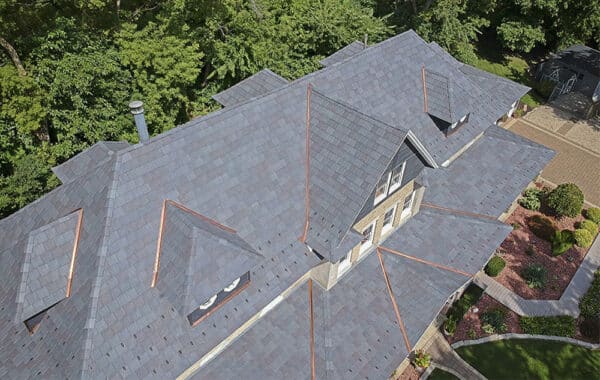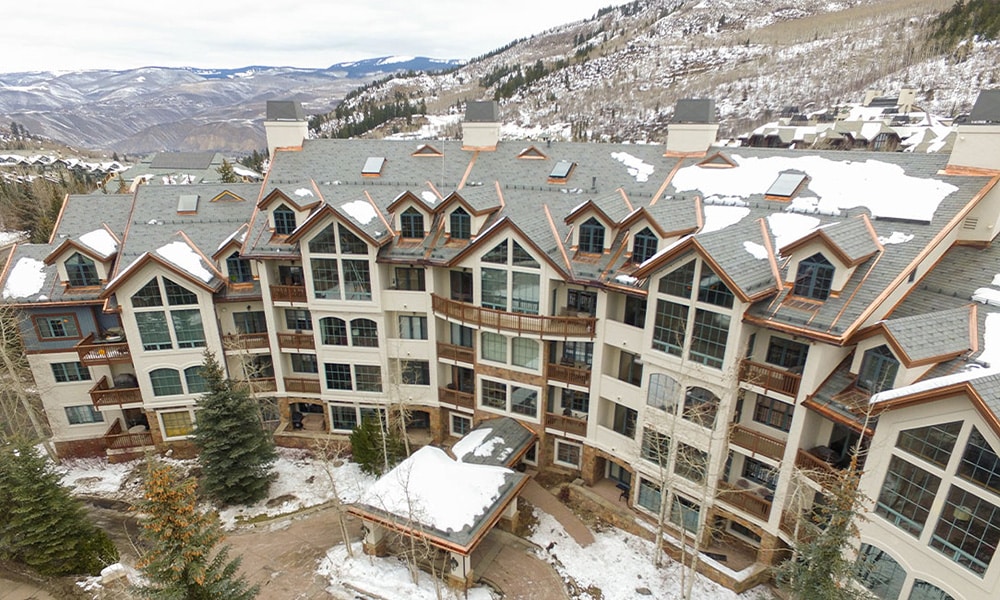Smooth, white and fairly. As snow falls, it blankets all the pieces to create a winter wonderland. Nonetheless, as that snow builds up in your roof, it may be something however a cheerful place.
Have you ever ever thought of how heavy accumulating snow and ice are? Extra importantly, how a lot weight can your roof maintain?
We’ve all seen photos of utmost climate circumstances the place individuals are performing roof snow removing by shoveling mountains of snow off their roofs. Would it not shock you to study that only one to 2 ft of heavy moist snow throughout your roof is equal to a number of tons of weight? Can your roof deal with that winter load?
Professionals Weigh In
Let’s begin initially. Throughout your own home’s design section, the architect or structural engineer thought of the burden of snow and ice within the roof design. For allowing and approval, group constructing code officers additionally reviewed the roof’s structural design.
The requirements to which a roof construction is designed are clearly outlined by The American Society of Civil Engineers (ASCE). These are of their revealed requirements, ASCE/SEI 7, Minimal Design Hundreds and Related Standards for Buildings and Different Buildings. They describe the means for figuring out design hundreds together with lifeless, stay, soil, flood, tsunami, snow, rain, atmospheric ice, seismic, and wind hundreds and their combos for normal structural design. The Customary is modified each six years.
When contemplating the very best roof for chilly climates, architects and engineers seek advice from Snow Hundreds: Information to the Snow Load Provisions of ASCE 7 dietary supplements ASCE/SEI Customary 7. These present particulars and authoritative explanations of the snow load provisions. Importantly, they provide steering on how a lot weight a roof can maintain.
 Passing the Take a look at
Passing the Take a look at
Now, how a lot weight can a roof maintain? And, particularly, how are you aware if your own home can carry the burden of ice and snow in your roof?
Owners of correctly engineered new homes know that their houses have handed constructing codes. These embrace having the ability to maintain the whole floor snow load as designed by the native constructing codes in kilos per sq. foot (psf) on the roof space.
For instance, let’s say there’s a brand new roof that measures 20’ on the eave with 20’ rafters at a ten:12 pitch. It’s in an space with a floor snow load of 30psf (equal to 1-2’ of heavy moist snow). And, it’s designed to carry 12,000 lbs (6 tons) of snow and ice weight, along with the roof protecting supplies. That’s plenty of weight on a roof.
What Form of Roof Issues
When a roof is roofed in a clean, “frictionless” materials, like composite slate or shake roofs, the burden of the ice and snow turns into of a lot better concern to the home-owner. This concern shouldn’t be as a consequence of what the burden of the snow and ice will do to the roof structurally. As an alternative, the priority is what the power and weight of 6 tons of snow and ice will do when it avalanches off a roof.
Composite roofing merchandise, like these made by DaVinci Roofscapes, are a few of the trade’s most sturdy roofing materials, have nonporous surfaces. As well as, they don’t take in water. Beneath these circumstances, snow and ice can’t “seize” onto the roof as they could with different roofing merchandise, like asphalt roofing, which has textured granules.
So, when snow and ice soften, water will transfer to the underside of the snowpack. There it acts as a lubrication, inflicting a roof snow avalanche. The home-owner doesn’t must do something in any respect to start out this avalanche, the snow merely slides en masse off the roof.
Cease the “Slip Sliding Away”
Within the abovementioned roof instance, if the roof top measured 20’ from eave to grade, a roof snow avalanche may launch off the roof as much as 15’ from the home. This might considerably hurt folks, pets, landscaping and something beneath the eave and 15’ past.
To assist mitigate this threat, snow retention techniques ought to at all times be used on composite roofing in areas experiencing ice and snow circumstances. Pad-style snow guards will act to interrupt up the sliding ice and snow. This manner it melts off the roof in smaller items, at a slower tempo. Pipe-style snow guards function a barricade, holding ice and snow on the highest. This permits it to soften and drop in small items or as water, which reduces the prospect of somebody getting damage from snow and ice falling off the roof.
 Suggestions for Discovering a Snow Retention System
Suggestions for Discovering a Snow Retention System
When a snow retention system is designed for any roof, the bottom snow load is significantly thought of. The snow guard producer should make certain that the designed system will be capable of face up to the burden of snow and ice pushing in opposition to it.
“Step one find the fitting snow retention system,” explains Alpine SnowGuards’ firm president and founder Brian Stearns, “is to estimate the mass or quantity of snow and ice that one is making an attempt to handle.” Creator of Designing a Snow Retention System for the Worldwide Institute of Constructing Enclosure Consultants, Stearns, says, “Probably the most dependable method to do that is to make use of the native constructing design floor snow load. The bottom snow load is utilized by constructing design professionals and is established by the American Society of Civil Engineers.”
Composite Roofs Want Snow Retention Methods
Right here’s the underside line. When you will have composite roofing, the burden of ice and snow on the roof shouldn’t be your major concern. Your main consideration is that the collected snow and ice will avalanche down in sheets and doubtlessly hurt folks or property beneath.
To keep away from that fear, in case you have composite roofing, make sure that to have a snow retention system in your roof. These could be put in both on the time your new composite roof is put up or retrofitted in place at a later date.

